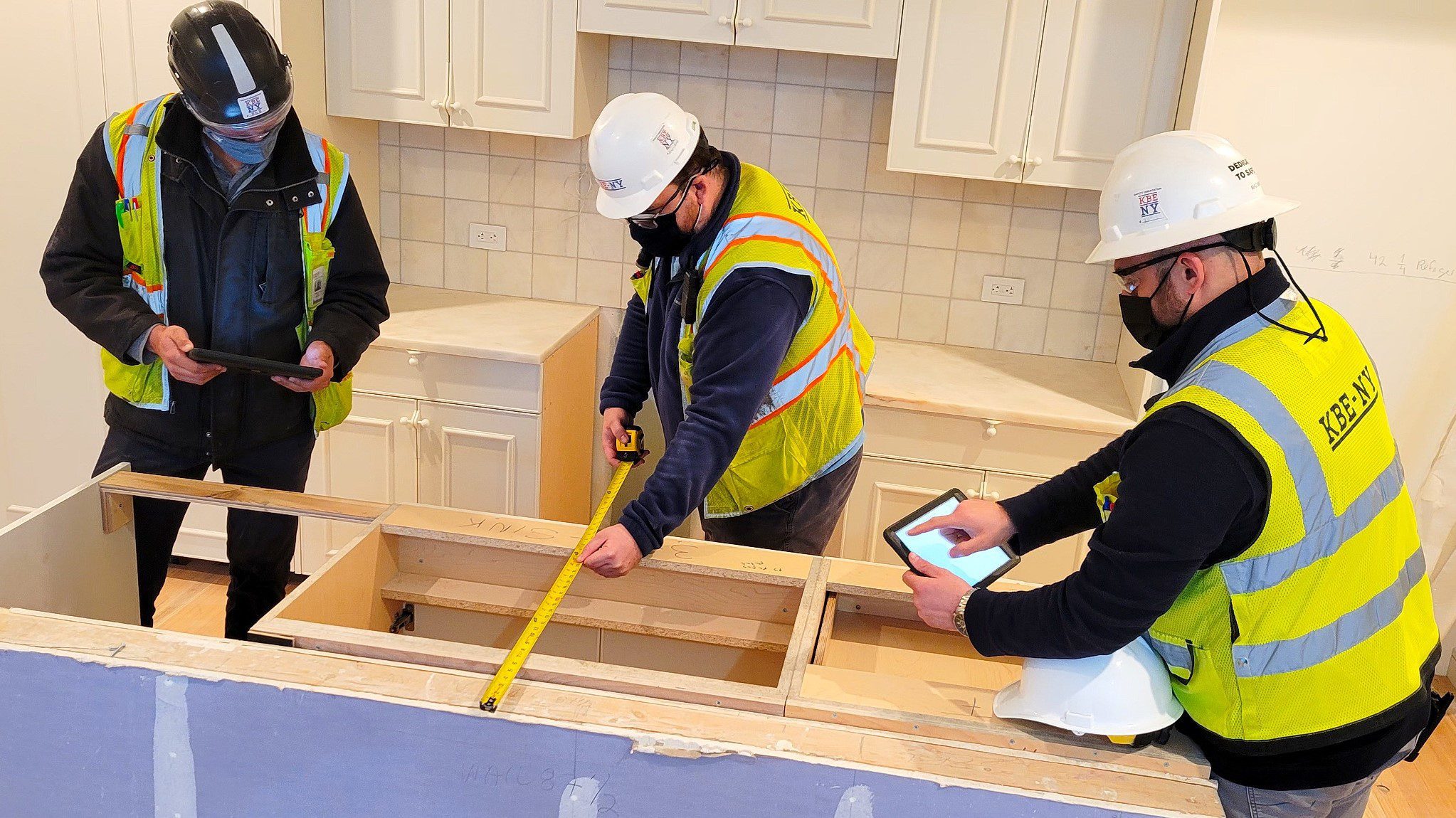Help us improve your experience. See content that is made for you!
See how IBM increased their efficiency by up to 30%!

Help us improve your experience. See content that is made for you!
See how IBM increased their efficiency by up to 30%!


The construction industry depends on successful, predictable project outcomes, even in times of upheaval, uncertainty, and change. There’s been no stronger example of all three challenges in recent times than the COVID-19 pandemic.
The pandemic has had a sweeping impact on the construction industry, with eighty-five percent of construction sites coming to a complete halt when declared non-essential by the state of New York in March 2020. In an industry that depends heavily on in-person work, collaboration, and planning, this shift presented significant obstacles for many construction firms.
At the beginning of the pandemic, we were working on six projects in New York City. These projects were a mix of non-essential and essential construction. In order to continue working on projects that were deemed essential - hospitals, housing, and infrastructure - we were required to submit applications to the Department of Buildings (DOB) and the timing of approvals for these applications was largely unpredictable.
While COVID-19 was disruptive to the construction industry, it validated our adoption and standardization on BIM 360 within Autodesk Construction Cloud. Having undergone a complete digital transformation in 2018, we had the tools at our disposal and transitioned to remote work seamlessly. This allowed our leadership to focus on implementing safety measures and procedures that were compliant with city and statewide protocols to keep our teams building and collaborating safely instead of needing to learn a new skill set at the start of the pandemic. Our team swiftly shifted its focus to getting safety supervisors on-site, implementing sanitation requirements, and brainstorming ways to increase job site safety.
Through the use of BIM 360, our safety and COVID-19 supervisors could digitally manage trade partners, track compliance, and individually upload materials. Trade workers could start work faster by proactively uploading information. The office team could then log in, check that trade workers’ paperwork was complete, and encourage accountability. Without digital tools, we would have potentially faced fines and possible shutdowns on site by not quickly tracking and providing the required documentation.
Construction is a people business built on trust and relationships. For that reason, safety always comes first. During the age of COVID, teams have had to go to even greater lengths to prioritize safety.
Having standards in place made it easier for us to transition and comply with the new protocols implemented during Phase 1 of New York City’s reopening plan in June 2020. One of the biggest changes was DOB’s enforcement of Local Law 196. This law encompasses numerous daily tasks, many of which are paperwork heavy. With in-person meetings no longer an option, many analogous tasks - such as signatures - were eliminated. However, we needed to have specific paperwork in place to avoid violations and fines.
We relied on BIM 360 as our common data environment to track all project data - meeting minutes, documents, and models - and forms to meet DOB requirements. With information centralized in BIM 360, we could track updates in real-time, eliminating bottlenecks and leading to efficiencies in closing out issues and RFIs faster. Our project leaders were also able to easily track and reference materials for the daily DOB compliance visits. If we did not have a methodology to quickly reference and identify digital signatures, we would have received a violation and faced site shutdowns.
To keep virtual meetings productive and actionable, we recorded meeting minutes within BIM 360. This streamlined and eliminated cumbersome processes associated with documenting updates in Word or spreadsheets and was embraced by our trade partners.
Daily job tasks were all uploaded into BIM 360, enabling our trade partners to view models directly from the field on an iPad. This reduced the amount of traffic in the field office, ensuring that we were compliant with social distancing regulations. Further, teams could mark models digitally in real-time instead of relying on paper. With documents linked in BIM 360, our trade partners receive notifications when changes are made that impact their deliverables. We can also take pictures and highlight areas to improve visibility and create more meaningful conversations across teams when meeting in-person is not an option to track progress.
Technology played a significant role in our communication and collaboration efforts and helped save time by eliminating the need to track paperwork.
The COVID-19 pandemic has brought unforeseeable challenges. But with any challenge comes the opportunity for better.
The pandemic has accelerated the use of digital construction management tools. By prioritizing construction technology and digital transformation, we have been able to work closely with our trade partners and forge new relationships. The pandemic has accelerated the use of digital tools to enhance the ways we collaborate and communicate across our teams which has increased trust and reliability.
The opportunity for better ways of working is here, and the industry will only continue to grow and adapt in times of upheaval, uncertainty, and change.
Leslie Cook leads business development for KBE-NY, a leading construction management firm who services New York City and the surrounding metropolitan areas. She is a proud member of Women in Housing and Finance of NY, Hudson Chamber of Commerce and is passionate about making a social and environment impact across the industry.

May we collect and use your data?
Learn more about the Third Party Services we use and our Privacy Statement.May we collect and use your data to tailor your experience?
Explore the benefits of a customized experience by managing your privacy settings for this site or visit our Privacy Statement to learn more about your options.